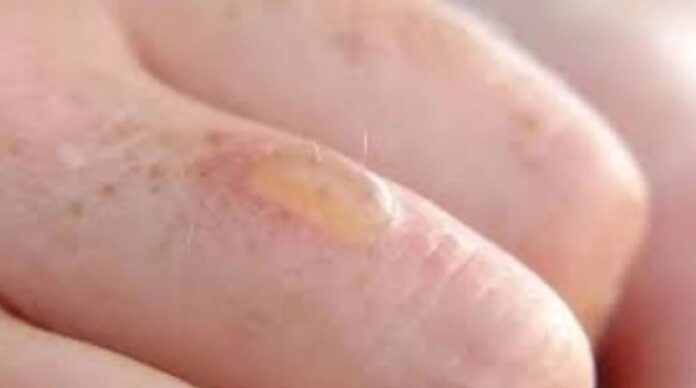Blisterata might sound like a complex medical term, but it affects many people worldwide. If you’ve ever experienced painful blisters on your skin, you know how uncomfortable they can be. Understanding this condition is crucial for managing and preventing future outbreaks. In this comprehensive guide, we’ll explore everything about blisterata—from its causes and symptoms to treatment options and natural remedies. Whether you’re dealing with blisterata yourself or just looking to educate yourself, this post has you covered. Let’s dive into the world of blisterata together!
What is Blisterata?
Blisterata is a skin condition characterized by the formation of fluid-filled blisters. These blisters can vary in size and may appear on different parts of the body. While they are often harmless, they can be painful and irritating.
The term “blisterata” encompasses various types of blister formations, which can arise from multiple factors. It’s crucial to identify the underlying cause to manage it effectively.
Unlike some conditions that might clear up quickly, blisterata can persist if not addressed properly. Understanding its nature helps individuals take proactive steps toward relief and prevention.
This condition isn’t just a minor nuisance; it requires attention. Being informed about what blisterata entails can empower those affected to seek timely treatment.
Causes of Blisterata
Blisterata can arise from various factors. One of the primary causes is friction against the skin. This often happens during physical activities, especially when wearing ill-fitting shoes or clothing.
Another contributing factor is moisture. Excessive sweating or wet environments can weaken the skin’s protective barrier, making it more susceptible to blisters.
Allergic reactions also play a role in developing blisterata. Certain materials or chemicals may irritate the skin, leading to painful bumps and blisters.
Moreover, underlying health conditions such as eczema or dermatitis can increase vulnerability to blister formation. These conditions compromise skin integrity and promote blister development under stress.
Infections caused by bacteria or viruses can trigger blister-like symptoms. Understanding these causes helps in better managing and preventing this uncomfortable condition.
Symptoms and Signs of Blisterata
Blisterata presents with several distinct symptoms that can vary from person to person. One of the most noticeable signs is the appearance of blisters on the skin. These may be filled with clear fluid and can occur in clusters or as solitary lesions.
Additionally, individuals might experience itching or a burning sensation around the affected areas. This discomfort often leads to increased irritation if not managed properly.
Swelling and redness can also accompany these blisters, indicating inflammation beneath the surface. In some cases, fever or chills may develop if an infection occurs alongside blisterata.
It’s essential to monitor these symptoms closely, especially if they worsen over time or do not respond to home treatments. Early identification plays a crucial role in effective management of this condition.
Treatment Options for Blisterata
When it comes to treating blisterata, several options are available. Doctors often recommend topical treatments that can soothe the affected area. These creams or ointments help reduce inflammation and provide relief from discomfort.
For more severe cases, oral medications may be necessary. These drugs can alleviate pain and control any secondary infections that might arise due to scratching or irritation.
In specific situations, a healthcare provider might suggest drainage of larger blisters to relieve pressure and prevent further complications. This procedure should only be performed by professionals to ensure safety.
Additionally, keeping the affected area clean is crucial for recovery. Gentle cleansing with mild soap helps maintain hygiene without aggravating the condition. Regularly changing dressings can also promote healing while protecting sensitive skin from external irritants.
Consulting a healthcare professional ensures you receive personalized care tailored to your unique situation.
Natural Remedies for Blisterata
Natural remedies can provide relief for those dealing with blisterata. Aloe vera is a popular choice due to its soothing properties. Applying fresh aloe gel directly onto the affected area can help reduce inflammation and promote healing.
Another effective remedy is chamomile tea. Brew a strong cup, let it cool, and then soak a cloth in the tea before applying it to your skin. This can alleviate irritation and redness.
Honey also works wonders thanks to its natural antibacterial qualities. A thin layer of honey on blisters may prevent infection while aiding in tissue regeneration.
Furthermore, vitamin E oil is known for enhancing skin healing. Gently massaging this oil into the blisters can improve recovery time and minimize scarring.
Staying hydrated plays a crucial role in maintaining healthy skin. Drinking plenty of water helps support overall bodily functions, including skin repair processes.
Prevention Tips for Blisterata
Preventing blisterata involves a few simple lifestyle adjustments. Start by maintaining good hygiene. Regularly wash your skin with mild soap to keep it clean and free from irritants.
Moisturizing is essential too. Dry skin can lead to cracks, making you more susceptible to blisterata. Use a gentle moisturizer daily, especially after bathing.
Choose your clothing wisely. Opt for breathable fabrics that reduce friction on the skin. Tight or rough materials may exacerbate discomfort.
Stay hydrated as well; drinking enough water keeps your skin supple and resilient against irritation.
Pay attention to any signs of redness or discomfort early on. Addressing these issues promptly can prevent further complications related to blisterat.
Conclusion
Understanding blisterata is essential for anyone experiencing its symptoms. This skin condition can be uncomfortable and concerning, but with the right knowledge, treatment options, and preventive measures, individuals can manage it effectively.
Recognizing the causes and signs of blisterat allows you to act quickly. Treatments range from over-the-counter solutions to professional medical care, ensuring that relief is within reach. Additionally, natural remedies provide alternative options that many find helpful in alleviating discomfort.
Prevention remains key in avoiding flare-ups. Simple lifestyle adjustments and skincare practices can significantly reduce your chances of developing this condition again.
Taking charge of your health empowers you to navigate through any challenges associated with blisterat confidently. With awareness and suitable strategies in place, living comfortably with this condition becomes a more achievable goal.
